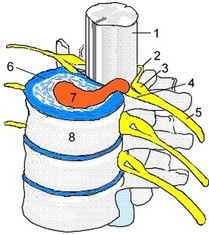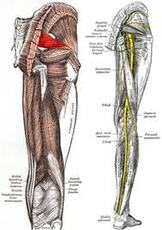DISC HERNIATION?
PIRIFORMIS SYNDROME?
If you have suffered with sciatica for very long, you have undoubtedly had an MRI. And more than likely you were told that your sciatica was due to a HERNIATED DISC. You were probably told to try some physical therapy or CORTICOSTEROID INJECTIONS, and then put on a slew of different medications — DRUGS that temporarily ease the symptoms, but do nothing to deal with the underlying problem.
If your problem is truly due to a Herniated Disc, you may have to have surgery. But before you even think of that, you need to look into SPINAL DECOMPRESSION THERAPY. Spinal Decompression Therapy is a fabulous last-ditch-effort for those who are going to end up under the knife. However, as I have written about in the past, neither INVERSION nor Spinal Decompression Therapy work on PIRIFORMIS SYNDROME.
In fact, one of the dirty little secrets of the Medical Profession is that MRI’s are next to worthless for diagnosing both SCIATICA and Herniated Discs (HERE). The reason for this is simple to understand. Study after study after scientific study has shown that somewhere between 50% to 70% of the adult American population is walking around with Disc Herniations that are visible on MRI’s. And as many much as 90% of our 60 years or older population has a degenerative or bulging disc. However, the vast majority of these people have no idea these problems are present because they have no pain or overt symptoms (HERE). This simple fact goes a long way to explaining the ABSURDLY HIGH FAILURE RATE for Back Surgeries. Doctors excitedly point to these features on the MRI, while telling you that this is undoubtedly your problem —- and they alone can fix it. Many people buy into this out of desperation. After all, you can’t go on living with this pain forever. You pray that maybe this is that “ah ha moment” you’ve been praying for.
Although most doctors are completely unaware of the fact (in fact, the doctors in my area never, as far as I can tell, diagnose Piriformis Syndrome) that Piriformis Syndrome has been Scientifically Proven to be the number one cause for Sciatica (HERE). That’s right. I used the word “proven”. This does not automatically mean that I, or anyone else can necessarily help you. However, it does give us a starting point and frame of reference. You see, in February of 2005, the prestigious publication The Journal of Neurosurgery: Spine published an amazing study done at UCLA’s Cedars Sinai Medical Center called, “Sciatica of Non-Disc Origin & Piriformis Syndrome: Diagnosis by MR Neurography and Interventional MRI with Outcome Study of Resulting Treatment “.
The purpose of the study was to address the fact that 4 out of 5 people with sciatica were being diagnosed improperly. Let me repeat that for those of you who are on autopilot. Nearly 80% of those with sciatica are being diagnosed improperly using standard methods. UCLA’s study involved 240 patients who were followed for up to seven years. Out of these 240 people with sciatica, the most common cause for sciatica turned out to be PIRIFORMIS SYNDROME —- a potentially debilitating disorder that arises from compression and /or entrapment of the sciatic nerve in the upper buttock area that many people refer to as their “hip”. According to the press release for the UCLA School of Medicine study,
|
“When a patient experiences painful persistent sciatica – pain radiating down the leg – physicians often look only for a herniated lumbar disk relying upon lumbar MRI scanning. Surgery for the disk herniation is often carried out to treat the sciatica. Most spine specialist consider piriformis syndrome to be extremely rare. However, the authors conclude that although it is rarely diagnosed, it is actually a common cause of sciatica – possibly as common as the well known herniated disk syndromes.”
|
SO, WHAT CAN YOU DO IF YOU THINK YOU MIGHT HAVE PIRIFORMIS SYNDROME?


